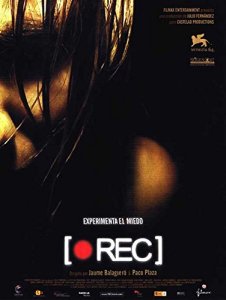
Ζούμε στην εποχή της πληροφορικής. Η γνώση είναι εύκολα προσβάσιμη: μπορούμε να μάθουμε σχεδόν τα πάντα, απλώς κάνοντας μια αναζήτηση στο Google. Αλλά η πολύ πληροφόρηση πολλές φορές οδηγεί στην παραπληροφόρηση.
Και όταν πρόκειται για θέματα γονιμότητας, δυστυχώς υπάρχει πολύ μεγάλη παραπληροφόρηση. Ως εκ τούτου, δεν αποτελεί έκπληξη αυτό που έδειξε μια πρόσφατη έρευνα: οι γνώσεις σχετικά με την ωορρηξία, τη γονιμότητα και τη σύλληψη είναι περιορισμένες μεταξύ των γυναικών, και πολλές τείνουν να πιστεύουν ορισμένους μύθους και παρανοήσεις.
Παρακάτω θα βρείτε 14 μύθους σχετικά με τη γονιμότητα που πολλοί άνθρωποι πιστεύουν, αλλά η επιστήμη έχει διαψεύσει:
ΜΥΘΟΣ # 1. Όσον αφορά τη μητρότητα, τα 40 είναι τα νέα 30

Το προσδόκιμο ζωής είναι μεγαλύτερο, και έχουμε την τάση να αναβάλουμε τη μητρότητα λόγω επαγγελματικής σταδιοδρομίας ή σπουδών. Από αυτή την άποψη, οι σαραντάρες μπορούν εύκολα να θεωρηθούν όπως ήταν κάποτε οι τριαντάρες. Δυστυχώς όμως, δεν ισχύει το ίδιο για τις ωοθήκες μας: μέχρι την ηλικία των 30 ετών, μια γυναίκα έχει περίπου 20% πιθανότητες να συλλάβει κάθε μήνα, όταν φτάνει στα 40, οι πιθανότητες έχουν πέσει στο 5%.
Αυτή είναι μια από τις πιο συχνές παρανοήσεις: αγνοώντας τη πτώση της γονιμότητας λόγω ηλικίας, πολλές γυναίκες αναζητούν βοήθεια για να τεκνοποιήσουν στα 40 τους, όταν μπορεί να έχουν ήδη χάσει την ευκαιρία να γίνουν γονείς.
Θα πρέπει να γνωρίζετε ότι υπάρχει ένα βιολογικό ρολόι, και χτυπάει! Εάν για προσωπικούς λόγους δεν μπορείτε να έχετε παιδιά στην κατάλληλη ηλικία γονιμότητας, υπάρχει δυνατότητα να παγώσετε τα ωάριά σας για να τα χρησιμοποιήσετε στο μέλλον.
ΜΥΘΟΣ #2. Ορισμένες στάσεις στο σεξ αυξάνουν τις πιθανότητες να μείνετε έγκυος

Πιθανόν να έχετε ακούσει ότι οι καλύτερες στάσεις για να μείνετε έγκυος είναι η “ιεραποστολική στάση” (η γυναίκα ανάσκελα, ο σύντροφος από πάνω) και η “στάση στα τέσσερα” (η γυναίκα στα χέρια και τα γόνατά της) επειδή παρέχουν τη βαθύτερη διείσδυση, επιτρέποντας στον άνδρα να εκσπερματίζει πιο κοντά στον τράχηλο της μήτρας.
Στην πραγματικότητα, δεν υπάρχουν επιστημονικά στοιχεία που να το αποδεικνύουν. Αυτή η πεποίθηση βασίζεται κυρίως σε μια μεμονωμένη μελέτη που εξέταζε τη θέση του πέους σε αυτές τις δύο στάσεις, αλλά δεν θίγει καθόλου τις πιθανότητες εγκυμοσύνης.
Επομένως, καμία στάση δεν φαίνεται να είναι καλύτερη όταν πρόκειται να μεγιστοποιήσετε τις πιθανότητες να συλλάβετε. Τα σπερματοζωάρια φτάνουν στον τράχηλο της μήτρας μόλις λίγα δευτερόλεπτα μετά την εκσπερμάτωση, και μέσα σε 5 λεπτά είναι στη σάλπιγγα, ανεξάρτητα από τη στάση στο σεξ.
ΜΥΘΟΣ # 3. Η ανύψωση των ποδιών στον αέρα για 20 λεπτά μετά το σεξ θα σας βοηθήσει να μείνετε έγκυος

Ίσως θα το έχετε ακούσει: “Ξάπλωσε στο κρεβάτι με τα πόδια ψηλά μετά από το σεξ για να αυξήσεις τις πιθανότητές να μείνεις έγκυος”. Δεν είναι αλήθεια όμως! Αυτό που συνήθως προτείνεται είναι να μείνετε ξαπλωμένη για 10-15 λεπτά μετά τη σεξουαλική επαφή, καθώς μέχρι τότε το σπέρμα θα έχει φτάσει στον τράχηλο, και πολλά σπερματοζωάρια θα βρίσκονται ήδη μέσα στη σάλπιγγα.
Παρόλα αυτά, μια νέα μελέτη αμφισβήτησε και τις δύο πεποιθήσεις: γυναίκες που υποβλήθηκαν σε σπερματέγχυση χωρίστηκαν σε δύο ομάδες – μία που έμεινε ξαπλωμένη με τα πόδια ψηλά για 15 λεπτά μετά τη διαδικασία, και μια που σηκώθηκε αμέσως. Αποδείχθηκε τελικά πως το 32% της ακίνητης ομάδας έμεινε έγκυος, σε σύγκριση με το 40% της ενεργούς ομάδας.
Επομένως, δεν χρειάζεται να βάλετε μαξιλάρια κάτω από τη λεκάνη κατά τη διάρκεια της επαφής, ούτε να κάνετε κυκλικές κινήσεις με τα πόδια σας στον αέρα για να μείνετε έγκυος.
ΜΥΘΟΣ # 4. Αν κάνουμε σεξ κάθε μέρα το σπέρμα γίνεται αδύναμο, μειώνοντας τις πιθανότητες σύλληψης

Πόσο συχνά πρέπει να κάνουμε έρωτα για να αυξήσουμε τις πιθανότητες εγκυμοσύνης; Θα βρείτε διάφορες συμβουλές στο διαδίκτυο: κάθε δεύτερη μέρα, 3 φορές την εβδομάδα, κάθε μέρα! Ποια από όλες είναι η σωστή; Ένα πράγμα είναι σαφές: η αποχή άνω των 5 ημερών βλάπτει την ποιότητα του σπέρματος. Παρόλα αυτά, δεν υπάρχει μεγάλη διαφορά αν οι άνδρες εκσπερματίζουν κάθε μέρα ή μέρα παρά μέρα. Είναι γεγονός πως πολλοί ιατροί συνιστούν συνουσία κάθε δεύτερη μέρα, με την λογική ότι θα αυξήσει την ποιότητα του σπέρματος, ιδιαίτερα στους άνδρες με μικρότερο αριθμό σπερματοζωάριων (ολιγοζωοσπερμία). Ωστόσο, πρόσφατες μελέτες δείχνουν ακριβώς το αντίθετο: οι ολιγοζωοσπερμικοί άντρες έχουν καλύτερη ποιότητα σπέρματος με την καθημερινή εκσπερμάτιση!
Πρόσφατα επιστημονικά στοιχεία δείχνουν ότι το καθημερινό σεξ προσδίδει ένα μικρό προβάδισμα: οι υψηλότερες πιθανότητες εγκυμοσύνης (37% ανά κύκλο) συσχετίζονταν με την καθημερινή σεξουαλική επαφή, αν και το σεξ μέρα παρά μέρα είχε συγκρίσιμα ποσοστά εγκυμοσύνης (33%). Από την άλλη μεριά, πρέπει να έχουμε κατά νου ότι η “υποχρέωση” σεξουαλικής επαφής κάθε μέρα μπορεί να προκαλέσει περισσότερο άγχος στο ζευγάρι, με αποτέλεσμα την μειωμένη σεξουαλική επιθυμία, χαμηλή αυτοεκτίμηση και τελικά μειωμένη συχνότητα σεξουαλικών επαφών.
Επομένως, η αναπαραγωγική αποτελεσματικότητα είναι υψηλότερη με σεξουαλικές επαφές κάθε μέρα ή μέρα παρά μέρα. Η βέλτιστη συχνότητα, ωστόσο, ορίζεται καλύτερα από την προτίμηση του κάθε ζευγαριού.
ΜΥΘΟΣ # 5. Κάνουμε σεξ μόνο όταν έχω ωορρηξία, δηλαδή την 14η μέρα του κύκλου

Η ωορρηξία (όταν πέφτει το ωάριο από τις ωοθήκες) λαμβάνει χώρα μία φορά το μήνα, συνήθως μεταξύ της 11ης και της 21ης μέρας του κύκλου (ο κύκλος ξεκινάει την πρώτη ημέρα της περιόδου).
Κάθε γυναίκα έχει ωορρηξία με το δικό της ρυθμό. Παρόλο που συνήθως λέγεται ότι μια γυναίκα με κύκλο 28 ημερών έχει ωορρηξία στην 14η ημέρα του κύκλου, αυτό δεν είναι απαραιτήτως αληθές: μια μελέτη διαπίστωσε ότι λιγότερο από το 10 τοις εκατό των γυναικών με κανονικούς κύκλους 28 ημερών έχουν ωορρηξία την 14η ημέρα.
Γνωρίζουμε ότι τα σπερματοζωάρια μπορούν να επιβιώσουν στο αναπαραγωγικό σύστημα μιας γυναίκας για περίπου 5 ημέρες, και ότι μόλις απελευθερωθεί το ωάριο, θα πεθάνει σε περίπου 12-24 ώρες. Επομένως, η γόνιμη περίοδος – ή το “γόνιμο παράθυρο” – είναι ένα διάστημα 6 ημερών που λήγει την ημέρα της ωορρηξίας, ή την επόμενη.
Για να αυξήσετε τις πιθανότητές να μείνετε έγκυος, καλό είναι να κάνετε σεξ πριν και κατά τη διάρκεια της ωορρηξίας, κάθε μέρα ή μέρα παρά μέρα. Αν οι κύκλοι σας είναι ακανόνιστοι και δεν μπορείτε να υπολογίσετε τις γόνιμες ημέρες, μπορείτε να χρησιμοποιήσετε ένα τεστ ωορρηξίας, ή να επισκεφθείτε τον ιατρό σας, που θα σας βοηθήσει να βρείτε τη δική σας γόνιμη περίοδο.
ΜΥΘΟΣ # 6. Το κάπνισμα δεν επηρεάζει τις πιθανότητες εγκυμοσύνης. Θα το κόψω μόλις μείνω έγκυος

Κατά πάσα πιθανότητα γνωρίζετε ότι το κάπνισμα κατά τη διάρκεια της εγκυμοσύνης είναι επικίνδυνο, καθώς μπορεί να οδηγήσει σε αποβολή, πρόωρο τοκετό, πολύ μικρά μωρά στην γέννηση και, σύμφωνα με πρόσφατες μελέτες, συγγενείς δυσπλασίες.
Αλλά θα πρέπει να γνωρίζετε ότι το κάπνισμα είναι επιβλαβές και για τη γονιμότητα: ακόμα και πέντε τσιγάρα την ημέρα μειώνουν τη γονιμότητα, τόσο σε γυναίκες όσο και σε άνδρες, και αυτό συμπεριλαμβάνει και το παθητικό κάπνισμα. Έχει υπολογιστεί ότι οι καπνιστές έχουν 10-40% χαμηλότερης γονιμότητας ανά μήνα και έως και 13% των περιπτώσεων υπογονιμότητας οφείλονται στο κάπνισμα.
Στη γυναίκα, το κάπνισμα επηρεάσει την ωορρηξία, καθώς και την ικανότητα του γονιμοποιημένου ωαρίου να εμφυτευτεί στη μήτρα. Επιπλέον, η επίδραση του καπνού είναι τόσο επιβλαβής για τις ωοθήκες, που η εμμηνόπαυση εμφανίζεται, κατά μέσο όρο, ένα έως τέσσερα χρόνια νωρίτερα στις καπνίστριες σε σχέση με τις μη καπνίστριες.
Αλλά και οι άντρες επηρεάζονται από το τσιγάρο: στους καπνιστές παρατηρείται μειωμένος αριθμός, κινητικότητα και διαταραχή στη μορφολογία των σπερματοζωάριων, γεγονός που επηρεάζει την ικανότητα των σπερματοζωαρίων να γονιμοποιήσουν το ωάριο.
Επομένως, πριν προσπαθήσετε για μωρό, κάντε χάρη στον εαυτό σας και… σβήστε το τσιγάρο για πάντα!
ΜΥΘΟΣ # 7. Μην ανησυχείς για την ηλικία σου. Το πιο πολύ να κάνεις εξωσωματική γονιμοποίηση

Μεγάλη παραπληροφόρηση! Πολλές γυναίκες πιστεύουν πως, σε περίπτωση υπογονιμότητας που σχετίζεται με την ηλικία, μπορούν να ξεπεράσουν το πρόβλημά τους αν υποβάλλονται σε εξωσωματική γονιμοποίηση. Στην πραγματικότητα, όπως και η φυσική γονιμότητα μειώνεται με την ηλικία, τα ποσοστά επιτυχίας με την εξωσωματική γονιμοποίηση μειώνονται σταθερά καθώς μια γυναίκα μεγαλώνει.
Σύμφωνα με το Κέντρο Ελέγχου και Πρόληψης Νοσημάτων (CDC) των ΗΠΑ, οι πιθανότητες μιας γυναίκας να γεννήσει ένα μωρό μετά από εξωσωματική γονιμοποίηση είναι: κάτω των 35 ετών 33%, 38 έως 40 ετών 17%, ενώ σε γυναίκες ηλικίας 43 έως 44 ετών μόλις 3% (με δικά τους ωάρια).
Η εξωσωματική γονιμοποίηση δεν αποτελεί εγγύηση για τεκνοποίηση, και δεν επεκτείνει την αναπαραγωγική περίοδος μιας γυναίκας. Αυτή η εσφαλμένη αντίληψη έχει -δυστυχώς- μεγεθυνθεί από τις πολλές διασημότητες που έχουν τεκνοποιήσει σε ηλικίες άνω των 45 ετών. Ενώ κάθε άτομο έχει το δικαίωμα να διατηρήσει την ιδιωτική του ζωή, πολλές από αυτές τις γυναίκες δεν έχουν μείνει έγκυες με τα δικά τους ωάρια, αλλά με ωάρια μιας νεότερης γυναίκας δότριας.
Υπάρχει μόνο μια πολύ μικρή πιθανότητα βελτίωσης της γονιμότητας με την υποβοηθούμενη αναπαραγωγή μετά την ηλικία των 43 ετών. Παρόλα αυτά, μπορείτε να επιλέξετε τη δωρεά ωαρίων (ωάρια μιας νεότερης γυναίκας) εάν η υπογονιμότητα που σχετίζεται με την ηλικία σας εμποδίζει να τεκνοποιήσετε.
ΜΥΘΟΣ # 8. Μια γυναίκα δεν μπορεί να μείνει έγκυος εάν δεν έχει οργασμό

Για τους άνδρες, τα πράγματα είναι ξεκάθαρα: χωρίς οργασμό δεν υπάρχει εγκυμοσύνη, καθώς η εκσπερμάτωση συμβαίνει κατά τη διάρκεια του οργασμού. Αν και η αλήθεια είναι πως αυτό δεν είναι απολύτως σωστό: πριν από τον οργασμό μπορεί να απελευθερωθούν σπερματοζωάρια στα λεγόμενα προσπερματικά υγρά (διαβάστε εδώ).
Για τις γυναίκες όμως, η σύλληψη δεν έχει καμία σχέση με τον οργασμό. Μπορεί όμως ο γυναικείος οργασμός να αυξήσει τις πιθανότητες σύλληψης;
Ανέκαθεν οι επιστήμονες έχουν αναρωτηθεί ποιος είναι ο σκοπός του γυναικείου οργασμού. Αν και η απάντηση δεν είναι ξεκάθαρη, έχουν προτείνει πολλές θεωρίες:
- Μόνο η ευχαρίστηση που προκαλεί, έτσι ώστε οι γυναίκες να θέλουν να αναπαράγονται και να διατηρήσουν το ανθρώπινο είδος!
- Η θεωρία του “πέλεκυ”: ο οργασμός κάνει τις γυναίκες να αισθάνονται χαλαρές και νυσταγμένες, ώστε να ξαπλώνουν μετά το σεξ και το σπέρμα να φτάνει πιο εύκολα στον προορισμό του.
- Η θεωρία του “ρουφήγματος”: οι συσπάσεις της μήτρας “ρουφάνε” τα σπερματοζωάρια που απελευθερώνονται στον κόλπο και τα βοηθάνε να ταξιδέψουν μέχρι τις σάλπιγγες.
- “Δέσιμο” του ζεύγους: Οι ορμόνες που παράγονται κατά τη διάρκεια του οργασμού (όπως η ωκυτοκίνη και η προλακτίνη) συμβάλλουν στη ανάκτηση συναισθημάτων προς τον σύντροφό της.
Ο οργασμός δεν είναι απαραίτητος για να μείνετε έγκυος, αλλά υπάρχουν αρκετοί λόγοι για να έχετε έναν! Παρόλα αυτά, δεν είναι ασυνήθιστο οι γυναίκες που προσπαθούν να συλλάβουν να συνδέουν την επιθυμία για οργασμό με την επιθυμία τους να τεκνοποιήσουν. Αυτό οδηγεί σε ψυχολογική πίεση και δυσκολία στην επίτευξη οργασμού, προσθέτοντας απογοήτευση σε μια διαδικασία που θα έπρεπε να είναι ευχάριστη…
Προσπαθήστε να μην θεωρήσετε τον οργασμό ως στόχο να μείνετε έγκυος. Απολαύστε τον χρόνο με τον σύντροφό σας, χωρίς καμία πίεση. Αν έχετε οργασμό, καλώς. Αν όχι, μια χαρά και αυτό!
ΜΥΘΟΣ # 9. Έχουμε ήδη ένα παιδί, οπότε εύκολα θα ξαναμείνω έγκυος

Ίσως, αλλά δεν είναι εγγύηση. Πολλά άτομα εμφανίζουν δευτερογενή υπογονιμότητα, δηλαδή δυσκολία να συλλάβουν ένα δεύτερο ή επόμενο παιδί.
Η δευτερογενής υπογονιμότητα μπορεί να οφείλεται σε παράγοντες που σχετίζονται με την ηλικία, τόσο για εσάς όσο και για το σύντροφό σας. Μερικές φορές, αναπτύσσεται μια νέα υποκείμενη ιατρική κατάσταση. Ενδεχομένως, ένα πρόβλημα γονιμότητας που πάντα υπήρχε μπορεί να χειροτερεύσει και να γίνει εμφανές. Μια προηγούμενη εγκυμοσύνη μπορεί να είναι και ο λόγος για τον οποίο δεν μένετε ξανά έγκυος: οι χειρουργικές επιπλοκές ή η μόλυνση μετά τον τοκετό μπορεί να έχουν προκαλέσει συμφύσεις, γεγονός που μπορεί με τη σειρά του να οδηγήσει σε υπογονιμότητα.
Τα πράγματα μπορεί να αλλάζουν με το χρόνο. Ακόμη και αν είχατε μείνει εύκολα έγκυος προηγουμένως, εάν δυσκολεύεστε αυτή την φορά να συλλάβετε, μιλήστε με το γιατρό σας, ο οποίος μπορεί να σας συμβουλέυσει για τα επόμενα βήματα που θα ακολουθήσετε.
ΜΥΘΟΣ # 10. Η υπογονιμότητα είναι αποκλειστικά ένα γυναικείο θέμα

Γενικά, οι αιτίες υπογονιμότητας χωρίζονται ως εξής:
- Περίπου το ένα τρίτο των ζευγαριών πάσχει από ανδρική υπογονιμότητα.
- Σε ένα άλλο τρίτο, το πρόβλημα είναι η γυναικεία υπογονιμότητα.
- Το υπόλοιπο τρίτο είτε αντιμετωπίζει συνδυαστικά ανδρική και γυναικεία υπογονιμότητα, ή πρόκειται περί ανεξήγητης υπογονιμότητας, όπου το πρόβλημα δεν μπορεί να εντοπιστεί.
Οι συχνότερες αιτίες ανδρικής υπογονιμότητας έχουν να κάνουν με προηγούμενη χειρουργική επέμβαση, λοίμωξη ή πρόβλημα που υπάρχει από τη γέννηση.
Οι πιο συχνές αιτίες γυναικείας υπογονιμότητας είναι: η ηλικία, το σύνδρομο των πολυκυστικών ωοθηκών, σαλπιγγικά ή πυελικά προβλήματα, ενδομητρίωση και οικογενειακό ιστορικό.
Στο πλαίσιο της διερεύνησης για τον προσδιορισμό της αιτίας και της θεραπείας της υπογονιμότητας, τόσο οι γυναίκες όσο και οι άνδρες θα πρέπει να υποβληθούν σε κλινικές και εξειδικευμένες συμπληρωματικές εξετάσεις.
ΜΥΘΟΣ # 11. Η ηλικία του άνδρα δεν έχει σημασία

Ενώ μερικοί άνδρες μπορούν να τεκνοποιήσουν στην ηλικία των 50 ή 60 ετών, η ανδρική γονιμότητα δεν παραμένει αμετάβλητη με το πέρασμα του χρόνου: αρχίζει να μειώνεται στα 40 έτη, αν και λιγότερο δραστικά σε σύγκριση με τη γυναικεία γονιμότητα.
Καθώς ο άνδρας μεγαλώνει, η συγκέντρωση των κινητών και φυσιολογικών σπερματοζωάριων, καθώς και ο όγκος του σπέρματος ελαττώνονται. Συνεπώς, λόγω της ποιοτικής αλλοίωσης των παραμέτρων τους σπέρματος στους άνδρες ηλικίας άνω των 40 ετών, οι πιθανότητες να προκληθούν αυτόματες αποβολές ή να γεννηθούν παιδιά με χρωμοσωμικές ανωμαλίες είναι μεγαλύτερες. Επιπλέον, τελευταίες επιστημονικές μελέτες έχουν δείξει πως υπάρχει άμεση σχέση μεταξύ ηλικίας του πατέρα σε συνδυασμό με αυξημένο κίνδυνο αυτισμού ή σχιζοφρένειας.
Συνεπώς, και η ηλικία του άντρα έχει σημασία. Ενώ οι άνδρες δεν έχουν μια απότομη και πλήρη πτώση της γονιμότητας όπως συμβαίνει στις γυναίκες, η “προχωρημένη πατρική ηλικία” είναι κάτι που πρέπει να γνωρίζουν τα ζευγάρια. Το βιολογικό ρολόι των ανδρών επίσης χτυπά!
ΜΥΘΟΣ # 12. Εάν φροντίζω καλά την υγεία μου, η γονιμότητά μου θα είναι μια χαρά

Υγιές σώμα και νους μπορεί να ενισχύσουν τη γονιμότητα σε ορισμένες περιπτώσεις. Όμως, οι περισσότερες αιτίες υπογονιμότητας δεν μπορούν να επιλυθούν με καλό τρόπο ζωής ή με καλή διατροφή και ιδιαίτερα η υπογονιμότητα που σχετίζεται με την ηλικία.
Είναι κοινή πεποίθηση ότι ορισμένοι τύποι διατροφής μπορούν να σας βοηθήσουν να μείνετε έγκυος. Όμως, δεν υπάρχουν επιστημονικά στοιχεία που να αποδεικνύουν ότι η χορτοφαγική διατροφή, οι δίαιτες με χαμηλή περιεκτικότητα σε λιπαρά, οι δίαιτες εμπλουτισμένες με αντιοξειδωτικά ή με βιταμίνες αυξάνουν τις πιθανότητες να αποκτήσετε παιδί.
Αυτό που είναι ξεκάθαρο είναι πως το σωματικό βάρος μιας γυναίκας παίζει ρόλο στη γονιμότητα: εκείνες που είναι είτε πολύ αδύνατες είτε παχύσαρκες ενδέχεται να δυσκολεύονται να συλλάβουν. Εάν προσπαθείτε να μείνετε έγκυος, μάθετε ορισμένες συμβουλές για τον τρόπο ζωής προκειμένου να αυξήσετε τις πιθανότητες εγκυμοσύνης εδώ.
ΜΥΘΟΣ # 13. Αν ένας άνδρας μπορεί να εκσπερματίσει σημαίνει πως δεν έχει κανένα πρόβλημα γονιμότητας

Πολλοί μύθοι περιβάλλουν την ανδρική γονιμότητα και τη σεξουαλική τους απόδοση. Είναι ατυχώς ένας κοινός μύθος ότι αν η γονιμότητα ενός άνδρα είναι ελαττωμένη, αυτό σημαίνει ότι η σεξουαλική του απόδοση είναι το πρόβλημα. Αυτό δεν είναι αλήθεια! Οι κύριες αιτίες ανδρικής υπογονιμότητας είναι τα προβλήματα με τον αριθμό, τη μορφολογία και την κινητικότητα των σπερματοζωάριων.
Ένας άλλος μύθος είναι ότι απλά κοιτάζοντας το σπέρμα μπορεί κανείς να καταλάβει εάν υπάρχει πρόβλημα γονιμότητας. Στην πραγματικότητα δεν υπάρχει καμία σχέση με την ύπαρξη σπερματοζωαρίων στο σπέρμα και την ποσότητα του σπέρματος (σπερματικού υγρού). Ακόμη και οι άνδρες που δεν έχουν καθόλου σπερματοζωάρια (αζωοσπερμία) συνήθως έχουν φυσιολογική ποσότητα σπερματικού υγρού.
Συνεπώς, για τη συντριπτική πλειοψηφία των ανδρών με υπογονιμότητα, δεν υπάρχουν ορατά ή προφανή σημάδια υπογονιμότητας. Η φυσιολογική στυτική λειτουργία και η κανονική εκσπερμάτωση δεν εγγυώνται ότι το σπέρμα είναι σε καλή κατάσταση.
Τούτου λεχθέντος, η στυτική δυσλειτουργία ενδέχεται να είναι σύμπτωμα υπογονιμότητας. Μπορεί να οφείλεται σε χαμηλά επίπεδα τεστοστερόνης ή σε κάποιο παθολογικό αίτιο. Δυσκολία στην εκσπερμάτωση μπορεί επίσης να είναι ένα σημάδι ορισμένων ιατρικών προβλημάτων. Αλλά αυτά τα σημάδια ανδρικής υπογονιμότητας εντοπίζονται εύκολα.
Εάν δυσκολεύεστε να μείνετε έγκυος, επικοινωνήστε με τον γιατρό σας. Μια ανάλυση σπέρματος (σπερμοδιάγραμμα) θα δείξει ξεκάθαρα εάν το σπέρμα είναι κατάλληλο για γονιμοποίηση.
ΜΥΘΟΣ # 14. Το αντισυλληπτικό χάπι θα βλάπτει τη μελλοντική σας γονιμότητα

Όλες οι επιστημονικές μελέτες συμφωνούν: τα ορμονικά αντισυλληπτικά δεν προκαλούν υπογονιμότητα. Μάλιστα, σε ορισμένες περιπτώσεις μακροχρόνιας χρήσης αντισυλληπτικών ενδεχομένως αυξάνουν τις πιθανότητες εγκυμοσύνης, ή και διατηρούν τη γονιμότητα. Διαβάστε περισσότερα για το αντισυλληπτικό χάπι εδώ.
Εν κατακλείδι:
Οι μύθοι και οι παρανοήσεις σχετικά με τη γονιμότητα και τη σύλληψη είναι δυστυχώς ευρέως διαδεδομένοι. Αυτό είναι ένα σοβαρό πρόβλημα, καθώς η παραπληροφόρηση μπορεί να οδηγήσει όχι μόνο σε περιττό άγχος αλλά και σε εσφαλμένες αποφάσεις …
Ενημερωθείτε! Συμβουλευτείτε τον γυναικολόγο σας, ο οποίος θα σας απαντήσει σε οποιεσδήποτε απορίες σας προβληματίζουν. Επιπλέον, ο γιατρός σας θα σας δώσει μερικές συμβουλές για αλλαγές στον τρόπο ζωής σας έτσι ώστε να βελτιστοποιήσετε τη γονιμότητά σας. Εφόσον το κρίνει απαραίτητο θα σας προτείνει ορισμένες συμπληρωματικές εξετάσεις, και να σας πει πότε θα τον/την ξανα επισκεφτείτε αν δεν προκύψει μια αυτόματη εγκυμοσύνη.
Και τέλος, μια φιλική συμβουλή: εάν θέλετε να μείνετε έγκυος, να κάνετε σεξ – όσο θέλετε, όποτε θέλετε – και να το απολαμβάνετε! Και μετά το πέρας της σεξουαλικής επαφής, κάντε ότι “σας καπνίσει” – χωρίς όμως να ανάψετε τσιγάρο 😉
Photo credits
Intro: pixabay.com; 1: rma-fl.com; 2: motherandbaby.co.uk; 3: romper.com; 4: pixabay.com; 5: wsaw.com; 6: babycenter.com; 7: nexter.org; 8: irishtimes.com; 9: health.clevelandclinic.org; 10: thefertilechickonline.com; 11: businessinsider.com; 12: hayatouki.com; 13: livescience.com; 14: pinterest.com














































